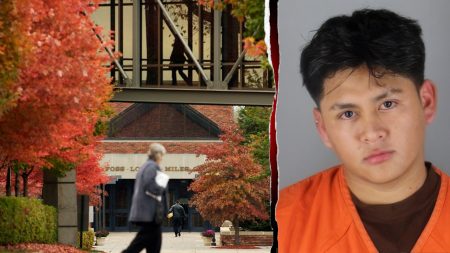The enigma surrounding the persistent drone sightings over New Jersey has sparked unease and speculation, with residents demanding answers amidst the government’s reticence. Former CIA operations officer Laura Ballman describes the situation as “extremely unsettling,” highlighting the public’s growing concern over the lack of official explanation. The prolonged duration of the sightings, coupled with the government’s guarded response, fuels speculation about the drones’ origin and purpose. Ballman suggests the drones might be part of a classified U.S. government operation, possibly testing evasion or detection technology in urban environments. This hypothesis stems from National Security spokesman John Kirby’s assertion that the drone operations are not illegal, combined with recent discussions about enhancing detection systems. Ballman dismisses the possibility of CIA involvement, emphasizing their lack of mandate to operate domestically. Her primary concern lies in the government’s reluctance to provide transparency and information to the public, further amplifying the mystery.
The persistent sightings, spanning several weeks and witnessed by thousands of residents across northern New Jersey, have elicited concern and frustration. Despite the growing public anxiety, national security officials attempted to downplay the situation, characterizing public concern as an “overreaction.” A conference call with reporters, including representatives from the FBI, FAA, NSC, DHS, and DOD, offered little in the way of concrete answers. While officials acknowledged the ongoing investigation, they remained tight-lipped about the drones’ origin and purpose. This lack of transparency further contributes to public unease and fosters an environment ripe for speculation and conspiracy theories. The government’s insistence on downplaying the situation contrasts sharply with the persistent and widespread nature of the sightings, leaving residents feeling unheard and disregarded.
The FBI’s involvement in the investigation underscores the seriousness of the situation, despite official attempts to minimize public concern. An FBI official revealed that the agency had received approximately 5,000 tips related to the drone sightings since November. However, fewer than 100 of these tips were deemed credible enough to warrant further investigation. This disparity between the volume of reported sightings and the number deemed worthy of investigation raises questions about the criteria used to assess the credibility of these reports. The FBI official’s statement about a “slight overreaction” further underscores the disconnect between the government’s perception of the situation and the genuine concern expressed by the public. The implication that the majority of reported sightings are not credible dismisses the lived experiences of those who witnessed the drones, further fueling public distrust.
The Department of Homeland Security echoed the FBI’s sentiment, suggesting that the actual drone activity is likely less than what is being reported. This assertion, coupled with the FBI’s statement, implies a concerted effort to downplay the significance of the sightings. While acknowledging the public’s concern, DHS officials maintain that the level of drone activity does not warrant the widespread anxiety it has generated. This dismissal of public concern, without providing concrete evidence to support their claims, only serves to deepen the mystery and increase public suspicion. The lack of transparency from both the FBI and DHS leaves the public with more questions than answers, further fueling speculation about the drones’ true nature and purpose.
The government’s attempt to downplay the drone sightings raises several key questions. Why the reluctance to provide more information? Is there a legitimate reason for the secrecy, or is the government attempting to conceal something? Could the drones be part of a classified operation, as Ballman suggests, or is there a more mundane explanation? The lack of transparency fuels suspicion and distrust, leaving residents to speculate about the nature and purpose of the drones. The government’s insistence on minimizing the situation only serves to exacerbate public concern and erode public trust. Providing more information, even if limited due to security concerns, would be a more effective approach to addressing public anxiety and quelling speculation.
The drone sightings over New Jersey highlight the challenges posed by unexplained aerial phenomena in the modern era. The ease with which drones can be deployed, combined with the difficulty in tracking and identifying them, creates a sense of vulnerability and uncertainty. The government’s response to these sightings has been characterized by a lack of transparency and a tendency to downplay public concern. This approach has only served to deepen the mystery and erode public trust. Moving forward, it is crucial for government agencies to prioritize transparency and communication in addressing such incidents. By providing timely and accurate information, they can alleviate public anxiety, foster trust, and effectively address the legitimate concerns raised by unexplained aerial activity. This incident underscores the need for clear protocols and communication strategies for dealing with such events in the future.











